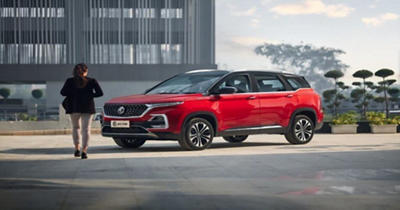Common Myths About Engine Auto Start-Stop Systems You Need to Stop Believing
Start-stop systems seem to be gathering pace, both in the auto world and among car enthusiasts. However, there is some debate and confusion around its efficacy, reliability, and safety. As with any new technology, a few myths and misconceptions should not keep you from experiencing the potential of a simple yet elegant fuel-saving and emission-lowering intervention.
What are start-stop systems?
As the name suggests, start-stop systems start and stop a vehicle’s engine as per certain conditions. They usually stop the engine when the car is stationary and start it when it is ready to move again. By doing so, they prevent the engine from idling when the vehicle is stationary, thus reducing its fuel consumption and consequently affording the driver some savings in fuel costs. Modern start-stop systems have sophisticated sensors and control panels that monitor the state of the vehicle and, crucially, its battery to ascertain when the engine should be switched on and off. According to some studies, start-stop systems afford fuel savings of up to 15% or a half-litre for every 100 kilometres driven and CO2 emissions reductions of as much as 20%.
Myth 1: Damage to powertrain components
A popular myth related to start-stop systems is that the frequent starting and stopping of the engine inflicts additional wear and tear on powertrain components like the engine and starter motor. This myth might arise from the widely-known fact that a cold start causes extra wear on engine components. However, start-stop systems do not cause additional weathering of the engine or starter motor. Since the start-stop systems only stop the engine for short periods that are not enough to let its fluids cool down, the engine doesn’t go completely cold. The starter motor paired with start-stop systems is usually of a more robust build quality, designed to handle the increased number of start-stop cycles without breaking a sweat.
Myth 2: Excess battery drain
Another common misconception held against start-stop systems is that they might drain the battery to the point of complete discharge. Start-stop systems have sensors that continuously monitor the state-of-health and state-of-charge of a battery. If these sensors detect that the start-stop cycles might drain the battery below a pre-determined level (usually 70% charge), they instruct the system to leave the engine running. Similarly, if they detect that the battery is not healthy enough to store a charge for long enough, they leave the engine running. Some start-stop systems use a separate battery or capacitor to power the starter motor, while the primary battery is free to take on all the other tasks required of it.
Myth 3: Increased fuel consumption
A commonly harboured notion among people is that frequent start-stop cycles increase fuel consumption. However, cars with start-stop systems are equipped with sensors and controls that ensure efficient operation of the engine and are specifically designed to reduce fuel consumption and vehicle emissions. The actual amount of fuel savings depends on your driving conditions, but studies have shown that start-stop systems can afford as much as a 15% decrease in fuel consumption in stop-go traffic driving.
Myth 4: Delayed Reignition
Unpleasant experiences with stalling at traffic lights might put people off start-stop systems. They might worry that delays in reignition will leave them stranded in traffic, much to the chagrin of fellow drivers. However, modern start-stop systems are designed to give reignition almost instantaneously at the merest press of the clutch or accelerator.
Start-stop systems are elegantly simple interventions to cut a vehicle’s fuel consumption and emissions, which is why the MG Hector 2021 is equipped with one. The MG Hector 2021’s 48V hybrid system features an automatic start-stop to ensure that no fuel is guzzled when the vehicle is stationary. This system is effective, reliable, and safe. It is also highly responsive, so as to make its operation almost imperceptible to the driver and passengers.
As a new technology, you might have doubts about start-stop systems, but once you understand its functionality and simplicity, you will be able to appreciate its efficacy and power.


